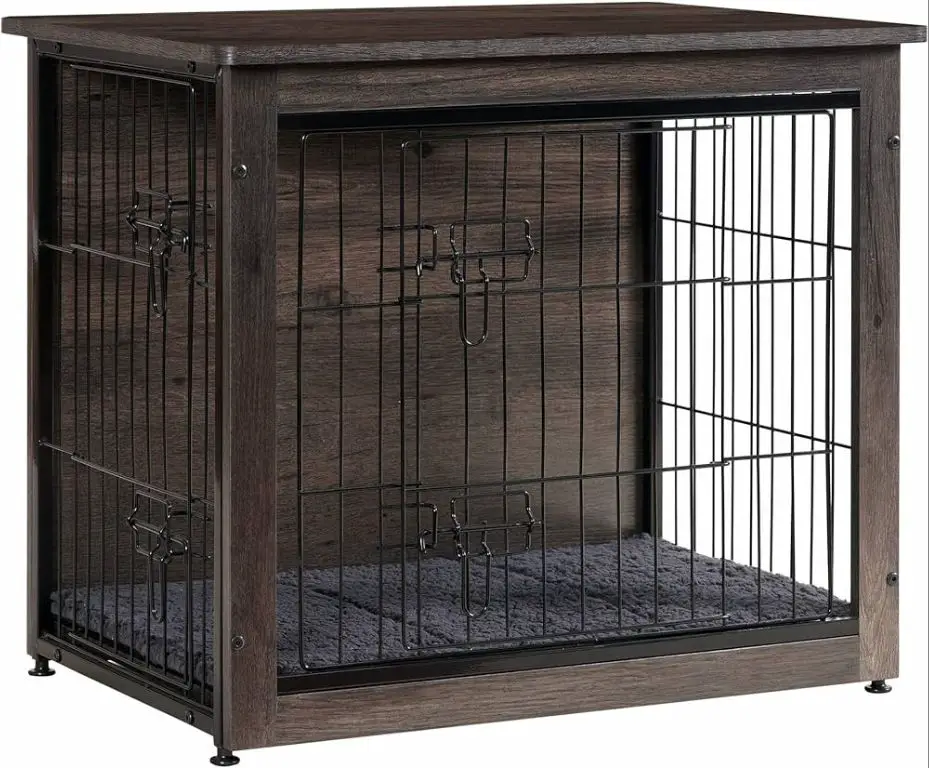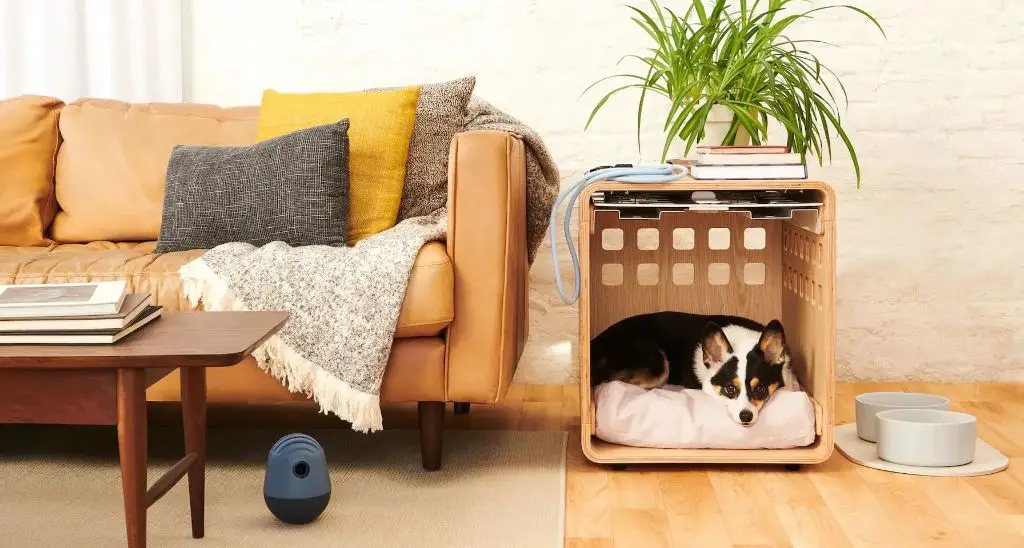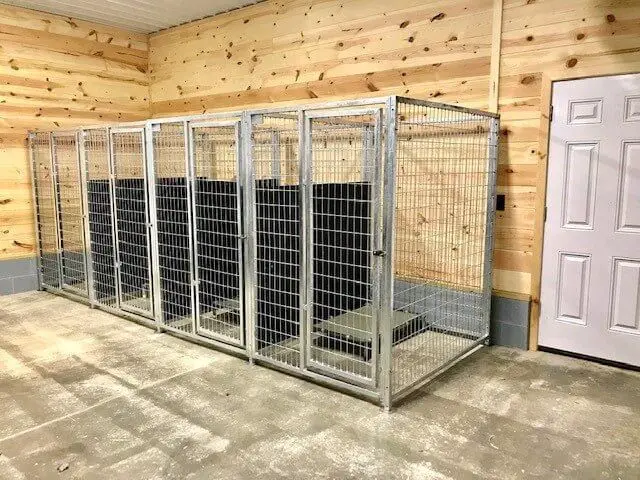Introduction
For many dog owners, crate training is an indispensable tool for housebreaking, managing destructive behavior, and keeping dogs safe when left alone. But if not used properly, crates can cause stress and anxiety in dogs who feel trapped or isolated.
So why do some dogs dislike crates so much? The reasons vary, but often come down to the dog’s background, the quality of crate training, and the amount of time spent confined. With understanding and positive reinforcement, both dogs and owners can learn to embrace crates as a refuge—not a prison.
This introduction aims to hook the reader by acknowledging common uses of crates while empathizing with dogs’ potential aversion, then setting up the article to explore the reasons behind dogs’ dislike of crates.
History of Crates for Dogs

Crates first became commonly used for dogs in the mid-1900s, as dog obedience training popularized crate training. Originally, dog crates were simple wooden boxes or wire cages meant to keep dogs confined safely while traveling or home alone. As obedience training principles came into vogue, trainers began using crates as a primary tool to teach dogs bladder control and prevent unwanted behaviors like chewing or getting into trash.
Over time, crates evolved from being seen as strictly utilitarian to becoming part of holistic dog training programs. Plastic airline-style crates became more available to dog owners in the 1970s and 80s. More recently, wire and fabric crates designed for comfort and den-like appeal emerged as crate training gained wider acceptance. Now crates come in many styles from basic wire to customized furniture-grade models, reflecting their broad integration into pet care.
Benefits of Crate Training
Crate training provides dogs with multiple benefits that can improve their quality of life. Some of the key advantages of proper crate training include:
Provides Safety and Security
Crates give dogs a personal space that is safe and secure. The enclosed crate helps contain the dog when the owner is away or occupied. This prevents the dog from getting into things it shouldn’t and keeps it from harming itself or the home.
Aids with Housebreaking
Because dogs naturally try to avoid soiling in their sleeping area, the crate helps establish consistency with potty training. Using the crate properly teaches the dog to hold it until it is time to go outside.
Reduces Anxiety
The crate provides a comfortable retreat that helps minimize stress and anxiety. Dogs naturally seek out dens, and the enclosed crate can simulate a relaxing den-like environment for the dog to feel calm and secure.
Why Dogs Resist Crates
There are several key reasons why dogs may resist going into their crates or try to get out once inside:
Feeling confined/claustrophobic
Dogs are naturally active animals who like to roam and explore. Being confined to a small enclosed space can cause them to feel claustrophobic and anxious. This is especially true for larger, energetic breeds.
Separation anxiety
Dogs are pack animals who bond closely with their human families. Dogs with separation anxiety may associate the crate with being left alone and panic at the thought of isolation.
Previous negative experiences
If a dog has had traumatic experiences in a crate before, such as being locked up for long periods, they may resist crating due to those negative associations. Punitive or improper uses of crates can create fear.
Creating a Positive Association
Dogs can learn to accept their crates with positive associations and proper training. Here are some tips to help your dog see their crate as a safe space:
- Make the crate comfortable with a soft bed, blankets, and toys. The crate should be cozy, not austere.
- Give treats and toys when your dog goes into the crate to reinforce it as a rewarding space.
- Start slow with very short durations in the crate, even just a few seconds or minutes at a time. Then gradually build up the time as your dog adjusts.

With patience and positive reinforcement, you can teach your dog to willingly relax in their crate without seeing it as a negative confinement. Go at their pace and make it a place they want to be.
Alternatives to Crates
While crates can be very useful for some dogs, they are not the only option for confinement and den-like security. Here are some alternatives to try:
Baby Gates
Baby gates allow you to block off an area like a hallway or kitchen to give your dog some space while keeping them contained and out of trouble. Make sure any baby gates are high enough and secure enough that your dog can’t jump over or push them down. Supervise your dog at first to ensure the gates are escape-proof.
Designated Safe Room
You can create a dog-proof room in your home by removing everything your dog shouldn’t chew, installing mats for comfort, and providing toys. Use baby gates to keep the door open but block exit. This allows your dog more space than a crate. Make sure to “dog proof” electrical cords and remove any poisonous houseplants.
Dog Pen
An enclosed dog pen provides your dog with their own little den and play area while allowing more room to move around. Look for sturdy pens designed for diggers and jumpers. Place the pen in a low traffic area with a mat, toys, and water. Supervise your dog during initial pen training.

When to Avoid Crates
While crate training can be beneficial for most dogs, there are some cases where crates should be avoided or used with caution:
Puppies Under 6 Months: Puppies under 6 months old should not be crated for more than 1-2 hours at a time, as they cannot control their bladder and bowels for longer periods. Crates that are too large can also allow elimination at one end and sleep at the other.
Dogs with Health Issues: Dogs that suffer from anxiety, confinement distress, or physical conditions like arthritis or hip dysplasia can find crates uncomfortable. Consult your vet if your dog has health issues before crate training.
Very High Anxiety Dogs: While many anxious dogs benefit from the security of a crate, others may harm themselves trying to escape. Pay close attention and avoid crating extremely anxious, fearful or stressed dogs showing signs of distress like injuring themselves, panting, and salivating.
Signs of Crate Distress
Dogs who dislike being crated may exhibit signs of distress that indicate they are unhappy in their confinement. Some common signs of crate distress include:
Whining/Barking – Dogs may whine or bark excessively when confined in a crate, especially when left alone. This vocalization is a cry for attention and a sign that the dog wants to be let out.
Pacing – Dogs may pace back and forth inside the crate, unable to settle down. Pacing demonstrates anxiety, frustration and an inability to relax inside the crate.
Destructive Behavior – Dogs may try to chew, claw or bend the crate in an attempt to escape. They may also destroy bedding, toys or other items in the crate. This destructive behavior shows the dog is stressed and sees the crate as an undesirable place of confinement.
Tips for Less Crate Time
If your dog struggles with being crated for long periods, there are some strategies to help limit crate time and keep your dog happier:
-
Provide plenty of exercise beforehand. Make sure to take your dog on a long walk or play session before crating to tire them out. A calm dog is more likely to settle in the crate.
-
Only crate during limited hours. Avoid crating overnight or for more than 4-6 hours at a time. The shorter periods the better.
-
Hire a dog walker. If you work long hours, have someone stop by halfway through the day to let your dog out for a potty break, play session, and walk. This breaks up the crating.
With some adjustments, you can minimize crating while still reaping the benefits for housetraining and preventing destructive behavior when you can’t supervise.

Conclusion
In summary, most dogs do not inherently dislike crates, but they may resist confinement or show signs of anxiety if not properly introduced to crates. The key is to create a positive association through training, making the crate a safe den-like space with cozy bedding, toys, and treats. While crates can be very beneficial for housetraining, preventing destructive behaviors, and easing travel, they should be used in moderation and dogs should not spend excessive time confined.
With patience and proper training, the crate can become a place dogs feel relaxed and content. However, if a dog continues to show extreme distress, it’s important not to force the issue. There are alternatives such as baby gates, pen enclosures, and dog-proofed rooms that can provide confinement when needed. Most importantly, dogs need sufficient exercise, play, training, and human interaction to thrive, whether crated or not. Proper care and training leads to a well-adjusted dog at ease in their environment.